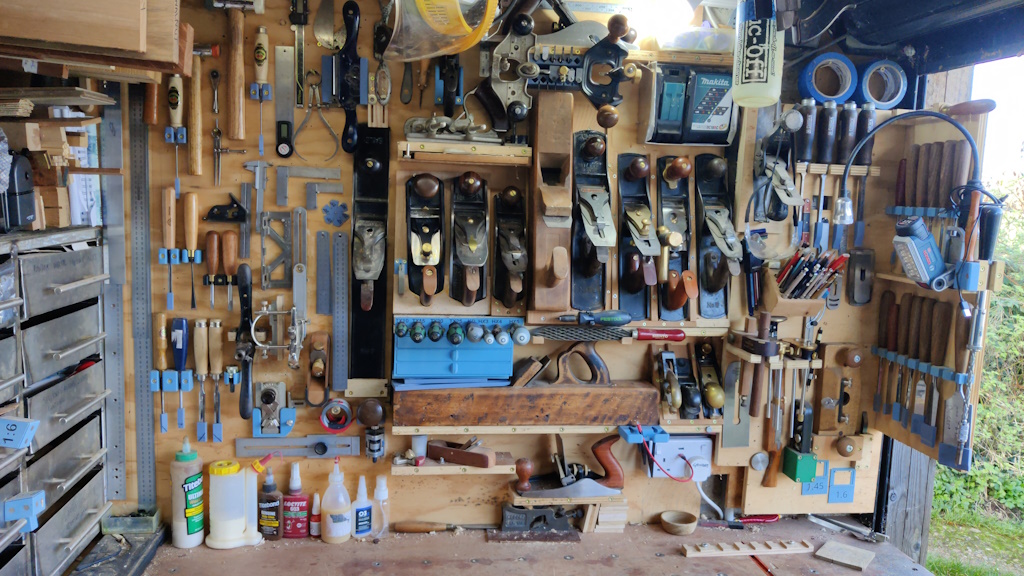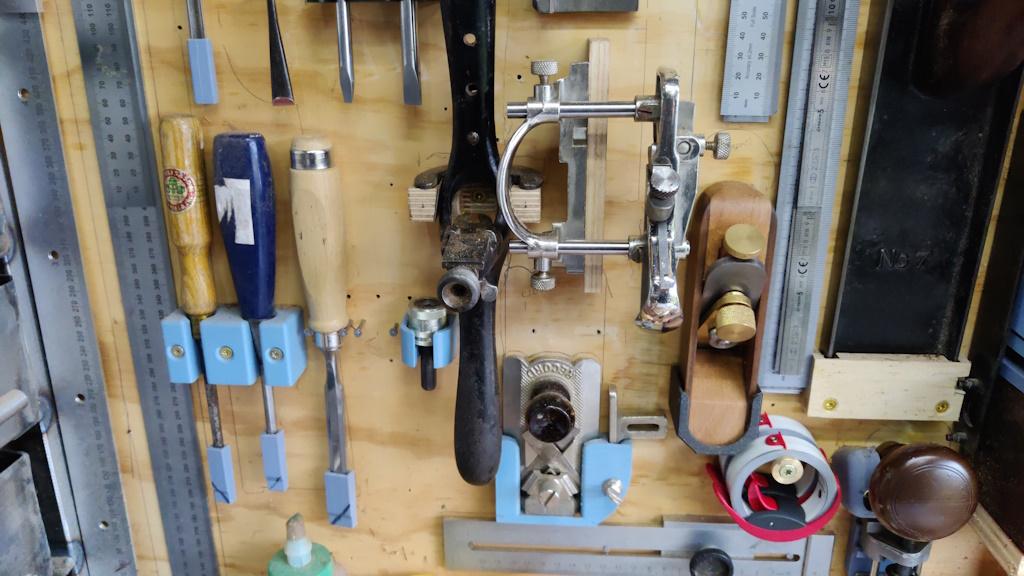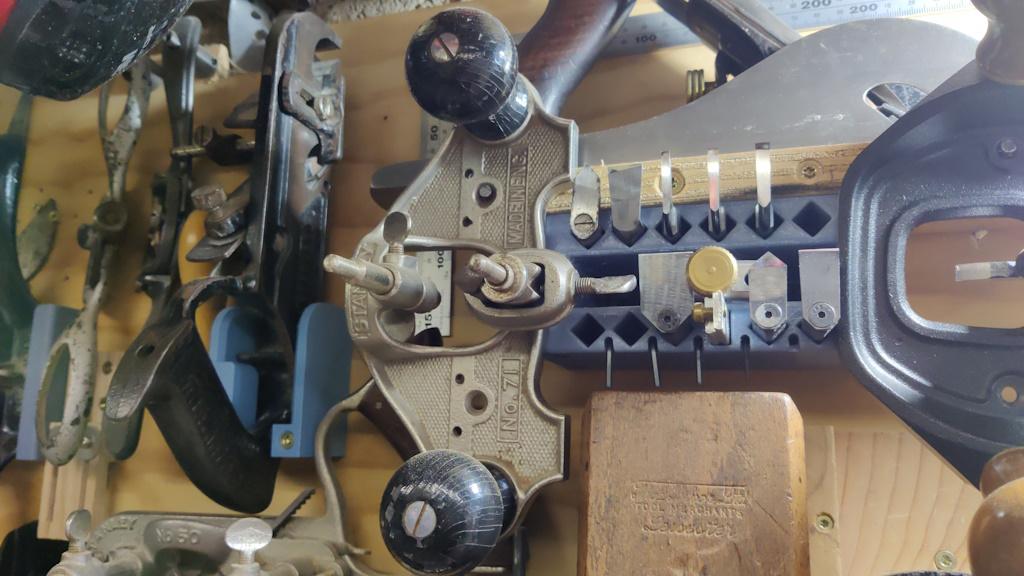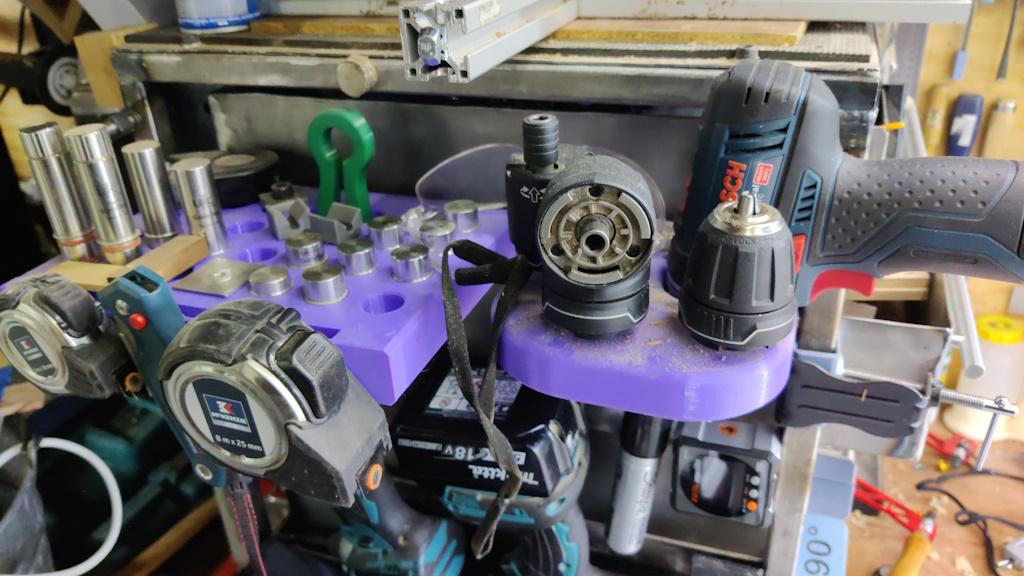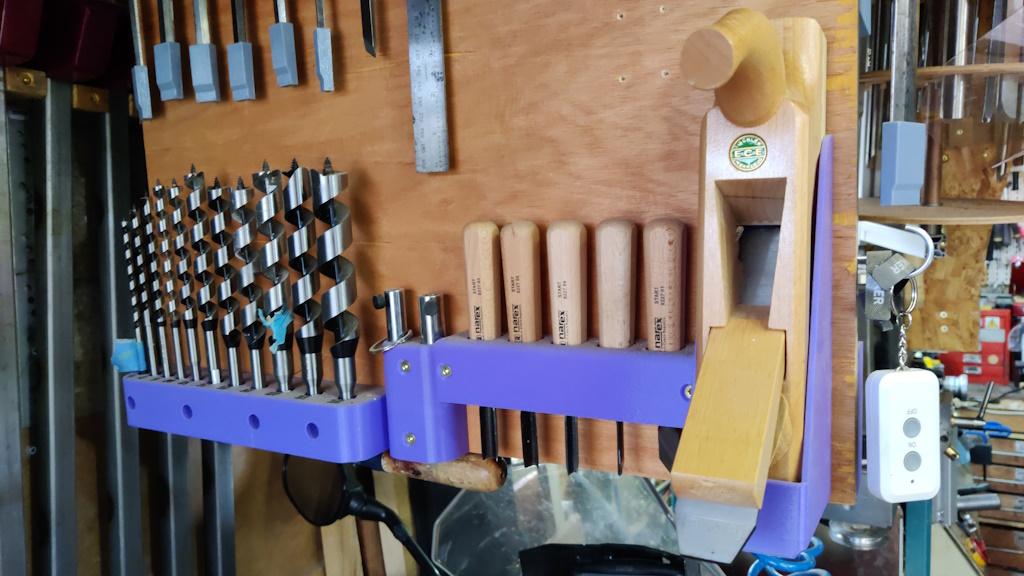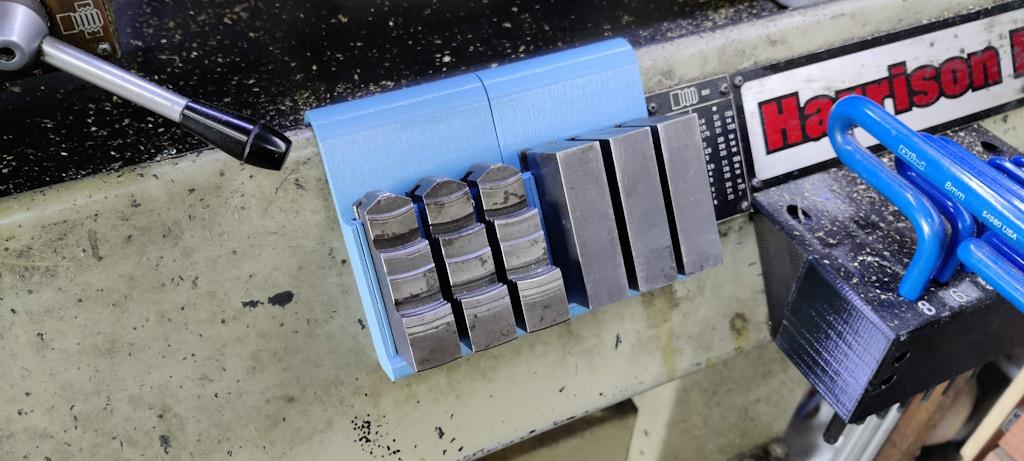Miscellaneous Wall Storage
One of the main things I use my 3D-printer for is finding custom ways to store tools. You can see some examples of wall-mounting brackets in the photo above and there are close-up photos of some of them below.
In this photo you can see several different types of wall-mount bracket. There are some simple chisel holders on the left, a side-rebate plane holder in the middle (with dedicated storage for the fence and its attachment screw), a holder for my home-made block plane and, if you look closely in the bottom-right corner, you can see the wall-mount for my Eclipse #36 honing guide.
This photo shows three more wall-mounted holders. On the right is a holder for router plane blades. It holds up to 11 router blades and also holds the fence for the Veritas plane and the sharpening jig for the blades with removable feet (which I never use now that I've found a far easier and better way of sharpening router plane blades). To the left of the router plane holder, you can see a simple holder for my #78 rebate plane and in the far-left of the picture you can just about see the edge of my holder for a #80 cabinet scraper.
This photo shows a couple of simple holders that mount on the side of my steel drawer unit. The one on the right holds my 12 V cordless drill and also the various interchangeable heads that came with it. The one on the left holds various bench dogs and also has a strip on the front for clipping tape measures (metric-only ones, of course!) and a Stanley knife (one that has a belt clip).
In this photo there are yet more examples, including some hex shank augur bits, the adaptors for holding them in a brace, some square-handled carving chisels and my scrub plane. You can also see some of the many custom-made chisel caps I use to protect my fingers when grabbing other stuff off the tool walls.
Strictly speaking, this doesn't class as wall storage, but it seems to fit in the same category. These are simple holders for the jaws for the three-jaw chuck on my Harrison M250. They have a curved hook that matches the curve of the front of the lathe and hence they simply hook over the front and can be slid side-to-side if required (although the chuck jaws sit low enough down that they don't interfere with the hand wheels so they don't tend to need to be moved around).
This website is free and ad-free, but costs me money to run. If you'd like to support this site, please consider making a small donation or sending me a message to let me know what you liked or found useful.

